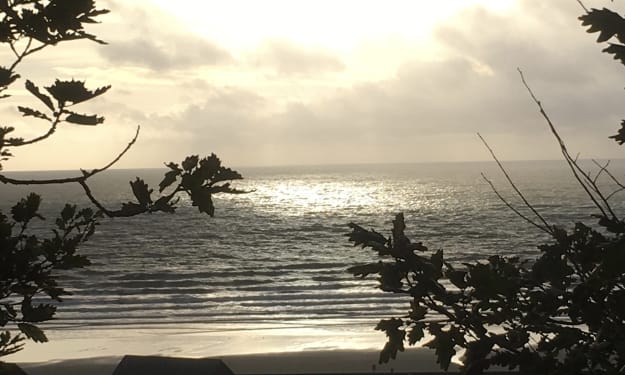True Tale of Real Beauty and the Beast
Unraveling the Story Behind the Disney Magic

Once upon a time, in the sun-kissed year of 1537, a tale unfolded in the enchanting Canary Islands that would echo through history, potentially inspiring the timeless Disney classic, "Beauty and the Beast." Imagine, if you will, a world where fairy tales weren't just figments of imagination but had roots in the real lives of extraordinary individuals.
Our protagonist, Pedro Gonzalves, entered this world with a congenital condition known as hypertrichosis, a rarity that turned him into what some might describe as a real-life werewolf, minus the haunting howls. In the mystic landscape of the Canary Islands, young Pedro faced the world with an abundance of facial hair, marking him as different from his fellow islanders.
Intrigued by this peculiar condition, the powers that be decided to send Pedro on a journey, not through enchanted forests, but across the seas to the court of King Henry II of France. This marked the beginning of Pedro's transformation from an ostracized "wild man" to an unexpected guest in the royal court.
As Pedro arrived in the French city of Fontainebleau, the court's academics and doctors, much like Disney's curious castle inhabitants, sought to unravel the mystery behind the "wild man." However, to their surprise, they discovered not a mythical creature but a 10-year-old boy, displaced from his homeland due to his unique condition.
King Henry II, intrigued by this unexpected gift, decided that Pedro deserved more than to be a mere curiosity. Ordering a proper education, the king unknowingly set the stage for a narrative that would parallel the fairy tale we all know and love. Young Pedro, now known as Petrus Gonzales, delved into the world of Latin, excelling in languages and defying societal expectations.
In this real-life fairy tale, the turning point came when King Henry II passed away in 1559, and Queen Catherine de' Medici assumed control. In a twist reminiscent of fairy tale queens orchestrating destinies, Queen Catherine arranged a marriage between Petrus and a young woman named Catherine (let's call her Kathy to avoid confusion).
The unsuspecting Kathy, daughter of a royal servant, found herself betrothed to a man she had never met, shrouded in mystery. The queen, much like a puppet master in a whimsical tale, failed to reveal the truth of Petrus's condition to Kathy. The stage was set for a marriage where appearances, much like in fairy tales, could be deceiving.
The real magic unfolded when love, that elusive force, emerged between Petrus and Kathy. Beneath the surface of excess facial hair, true love flourished, defying societal norms and expectations. The Gonzales family, now a spectacle in the European courts, embarked on a journey that would challenge perceptions and captivate audiences.
As the family toured through Europe, natural scientists sought to understand the genetic intricacies behind hypertrichosis. Portraits were painted, turning the Gonzales family into both subjects of fascination and, arguably, objects of exploitation. Their story became intertwined with the narrative of Beauty and the Beast, inspiring tales that would be passed down through generations.
However, like all tales, this one has its mysteries and uncertainties. Did Petrus and Kathy find their "happily ever after"? The historical records, fascinated by Petrus's condition, provide scant details about their lives beyond the spectacle they became. While the Disney version concludes with the breaking of the beast's curse through the power of true love, reality didn't offer such a remedy for Petrus.
The original Beauty and the Beast narrative, dating back to Gabrielle-Suzanne Barbot de Villeneuve's tale in 1740, suggests inspiration drawn from the Gonzales family. Yet, the roots of this timeless tale delve even further into history, with over 23 variations of Beauty and the Beast found globally and 162 versions of the animal bridegroom archetype.
Fairy tales, it seems, transcend time and culture, reflecting the complexities of the human psyche. The archetype of Beauty and the Beast, rooted in stories dating back to the 1500s, continues to capture our imagination. Whether inspired by the Gonzales family or born from the collective consciousness of humanity, these tales endure, weaving threads of magic, love, and acceptance.
In the end, the true magic lies not in the fantastical elements of fairy tales but in the resonance of their themes with the human experience. The real Beauty and the Beast might not have had a malevolent enchantress or a miraculous transformation, but their story, like all enduring tales, invites us to look beyond appearances and find the beauty that dwells within. And so, the echoes of Beauty and the Beast linger, inviting us to ponder the mysteries of love, acceptance, and the timeless allure of a good story.
About the Creator
Tallal Jafri
Dive into a universe crafted by Tallal, Uncover captivating narratives that transcend boundaries, beckoning you to a symphony of emotions and adventures. Explore the extraordinary.
Enjoyed the story? Support the Creator.
Subscribe for free to receive all their stories in your feed. You could also pledge your support or give them a one-off tip, letting them know you appreciate their work.






Comments
There are no comments for this story
Be the first to respond and start the conversation.